Functional versus Junk DNA Predictions
The oft-read claim... that the term "junk DNA" never implied developmentally "non-functional DNA" is one that is made either out of ignorance or disingenuousness." — evolutionary biologist Richard Sternberg1
Overview
Proponents of evolutionary theory predicted that most DNA in organisms with large genomes and low reproductive rates would be junk. Meanwhile, Intelligent Design (ID) proponents predicted that most DNA would turn out to be functional.
This table shows notable scientists who advocated junk DNA and their reasons for doing so. The placement of X's is conservative, since not every work by each author has been surveyed:
| Authors and Year | Neutral Theory | Genetic Load | Selfish Genes | Trial / Error | C-Value | Seems Unused | How much DNA is junk? |
|---|---|---|---|---|---|---|---|
| Motoo Kimura, 19682 | x | "many" | |||||
| Jack King & Thomas Jukes, 19683 | x | "99 percent" | |||||
| David E. Comings, 19724 | x | x | 1 to 10% is strictly functional. 80 to 93% is junk | ||||
| Susumu Ohno, 19725 | x | x | x | x | 94% or more | ||
| Stephen J. O'Brien, 19736 | x | "less than 10%" is functional. | |||||
| Ford Doolittle, 19807 | x | x | x | x | ? | ||
| Francis Crick & Leslie Orgel, 19808 | x | x | x | "much DNA... has no specific function" | |||
| John Maynard Smith, 19819 | x | ? | |||||
| Carl Sagan, 199310 | x | x | "some, maybe even most" | ||||
| Kenneth Miller, 199411 | x | genomes are "full of junk" | |||||
| Craig Venter, 199412 | x | "so much garbage" | |||||
| Christian de Duve, 199513 | x | x | x | "eukaryotic genome is made mostly of noncoding DNA without obvious function... Less than 5 percent of the human DNA has a coding function" | |||
| Sydney Brenner, 199814 | x | x | ? | ||||
| Joseph Felsenstein, 200315 | x | "much of the DNA" | |||||
| Francis Collins, 200616 | x | x | 45% is useless ancient repetitive elements, total junk % not given. | ||||
| Michael Shermer, 200617 | x | x | "only a tiny percentage" is not junk. | ||||
| Philip Kitcher, 200718 | x | x | genomes are "full of" junk. | ||||
| PZ Myers, 200819 20 | x | x | 97% (only about 30,000 genes not junk) | ||||
| Richard Dawkins, 1976, 1998, 200921 22 23 | x | x | 95% "might as well not be there" | ||||
| John Avise, 201024 | x | x | "50% and probably much more" | ||||
| Dan Graur, 2012, 201325 26 | x | x | x | x | x | x | < 91% junk. "approximately 9%... is certain to be functional" |
| Don Prothero, 201327 | x | "80-90%" | |||||
| T. Ryan Gregory, & Alexander Palazzo, 201428 | x | x | x | x | x | "at least 90% of the genome" |
Proponents of Evolutionary Theory Predicted Junk DNA
There were at least six reasons why proponents of evolutionary theory predicted most DNA in large genomes would be junk, four of which are based on evolutionary theory itself. In other words, if evolutionary theory is true these are the reasons we should expect that most DNA in large genomes is junk:
1. Neutral theory
The neutral theory of evolution claims that most of the DNA differences between larger genome organisms is by chance, and not because natural selection favored organisms having those mutations. The reasoning is as follows:
In typical populations of complex organisms, natural selection can only help spread or remove mutations that have a strong effect. Otherwise, random chance is the dominant factor in deciding which organisms reproduce and pass on their genes.
Since most mutations have very little effect on an organism,29 30 neutral theory is a mathematical reality.31 "The revolution is over. Neutral and nearly neutral theory won," as biologist PZ Myers described.32
In humans and other large mammals, greater than 99.98% of mutations would spread through the population by chance rather than because of natural selection.33 34
Only about 5 to 10% of DNA is shared between humans and more distantly related mammals such as horses, dogs, and mice.35 Therefore if these animals all evolved from a common ancestor, given neutral theory, the large majority of DNA not shared by these animals would have come about by chance and not natural selection. Since DNA that exists only by chance will have a random sequence, it is therefore highly unlikely to be functional.
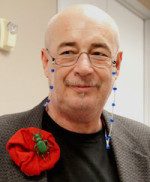 |
Dan Graur, 2012 Evolutionary and molecular biologist, leading proponent of junk DNA. ...there exists a misconception among functional genomicists that the evolutionary process can produce a genome that is mostly functional.25 If the human genome is indeed devoid of junk DNA as implied by the ENCODE project, then a long, undirected evolutionary process cannot explain the human genome.26 |
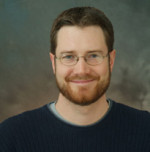 |
T. Ryan Gregory, 2014 Evolutionary and genome biologist. We would expect that natural selection would be powerless to stop the accumulation of certain genomic alterations over the entirety of metazoan [meaning animal] evolution.28 |
2. Genetic load
Genetic load (also called mutational load) is the average number of deleterious(harmful) mutations per organism in a population. If the genetic load is too high, the population will not survive.
Organisms with more DNA generally have more mutations, since the number of errors increases as more is copied. If most of the DNA in large genome organisms (e.g. mammals) is functional, then these mutations will usually break important functions. And if evolution could not even maintain these large amounts of DNA, then it could not have created it.
But if most DNA does nothing, or does not have specific information, then most mutations will be harmless. Therefore because of this genetic load problem, evolutionary theory both predicts and requires only a small amount of DNA in large genome organisms will be functional.
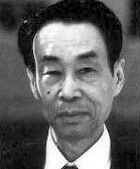 |
Motoo Kimura, 1968 Biologist who first introduced the neutral theory of evolution. Assuming a 25-year generation time, his estimate gives 12.5 mutations per generation (25 year generation / 1 mutation / 2 years) and he says such a rate would drive a species extinct: ...in the evolutionary history of mammals, nucleotide substitution has been so fast that, on average, one nucleotide pair has been substituted in the population roughly every 2 years... Calculating the rate of evolution in terms of nucleotide substitutions seems to give a value so high that many of the mutations involved must be neutral ones... |
|---|---|
 |
Jack King and Thomas Jukes, 1969 King and Jukes (pictured) were evolutionary biologists known (along with Kimura) for originating neutral theory. They calculated a mutation rate four times faster than that of Kimura, and likewise concluded 99% of DNA must be junk in order to tolerate this rate: It would appear that mammalian evolution is proceeding at the rate of about two allele substitutions per year. In relatively long-lived mammals this may be 20 substitutions per species per generation; in the human species this is an evolutionary rate of nearly 60 amino acid substitutions per generation, implying a genome mutation rate including 60 neutral amino acid substitutions per gamete... Either 99 percent of mammalian DNA is not true genetic material, in the sense that it is not capable of transmitting mutational changes, which affect the phenotype, or 40,000 genes is a gross underestimate of the total gene number... it is clear that there cannot be many more than 40,000 genes.3 |
 |
David E. Comings, 1972 Medical doctor, author, and atheist The mutational load would be too great to allow survival if all the DNA of most eukaryotes carry was composed of essential genes [...] |
 |
Susumu Ohno, 1972 Geneticist and evolutionary biologist, first proposed gene duplication as a major factor in evolution The moment we acquire 105 gene loci, the overall deleterious mutation rate per generation becomes 1.0 which appears to represent an unbearably heavy genetic load [...] Even if an allowance is made for the existence in multiplicates of certain genes, it is still concluded that at the most, only 6% of our DNA base sequences is utilized as genes5By "genes" Ohno does not necessarily mean only protein coding regions, but rather any functional region of DNA. Just as Ford Doolittle used the term in his 1980 paper.7 |
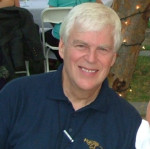 |
Stephen J. O'Brien, 1973 Geneticist, member of the national academy of sciences who has authored over 850 scientific articles A second widely used argument which suggests a minimum of informational DNA in the eukaryote genome (less than 10% of the available DNA) states that the mutational genetic load would be inordinate if mammals used all their DNA to carry and transmit biological information... If one accepts that the majority of gene substitutions and polymorphisms are selectively neutral, then the restrictions imposed by a genetic load on functional gene number become negligible. Neutral gene substitutions certainly cannot contribute to any accumulating substitutional or mutational load which depends upon selective disadvantage for its action. We must therefore estimate whether the number of functional genes are minimal, or rather that most gene substitutions are inconsequential with respect to natural selection.6 In other words, because of genetic load then either the genome must have very few genes, or the genes must be mostly made of junk DNA that can mutate without consequence. He goes on to promote the latter hypothesis. |
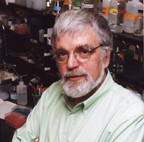 |
Ford Doolittle, 1980 Biochemist and member of the National Academy of Sciences. Middle-repetitive DNAs together comprise too large a fraction of most eukaryotic genomes to be kept accurate by Darwinian selection operating on organismal phenotype.7 |
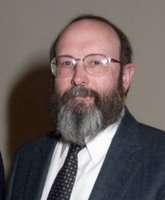 |
Joseph Felsenstein, 2003 Theoretical population geneticist and member of the National Academy of Sciences. If much of the DNA is simply “spacer” DNA whose sequence is irrelevant, then there will be a far smaller mutational load. But notice that the sequence must be truly irrelevant, not just of unknown function... Thus the mutational load argument seems to give weight to the notion that this DNA is nonspecific in sequence.15 |
 |
Dan Graur, 2012 Evolutionary and molecular biologist, prominent junk DNA proponent, atheist Thus, according to the ENCODE Consortium, a biological function can be maintained indefinitely without selection, which implies that at least 80 – 10 = 70% of the genome is perfectly invulnerable to deleterious mutations, either because no mutation can ever occur in these “functional” regions, or because no mutation in these regions can ever be deleterious. This absurd conclusion was reached through various means [...] only sequences that can be shown to be under selection can be claimed with any degree of confidence to be functional... The absurd alternative... is to assume that no deleterious mutations can ever occur in the regions they have deemed to be functional.25 If the human genome is indeed devoid of junk DNA as implied by the ENCODE project, then a long, undirected evolutionary process cannot explain the human genome... If ENCODE is right, evolution is wrong.26 |
 |
T. Ryan Gregory, 2014 Evolutionary and genome biologist If the rate at which these mutations are generated is higher than the rate at which natural selection can weed them out, then the collective genomes of the organisms in the species will suffer a meltdown as the total number of deleterious alleles increases with each generation... [This is] incompatible with the view that 80% of the genome is functional in the sense implied by ENCODE.28 |
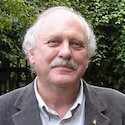 |
Larry Moran, 2014 Biochemist, textbook author, atheist, and well known ID critic It should be no more than 1 or 2 deleterious mutations per generation [...] If the deleterious mutation rate is too high, the species will go extinct.36Humans get about 56 to 160 mutations per generation.37 If any more than a small percentage of DNA has a meaningful sequence, such a mutation rate causes more than 1-2 harmful mutations per generation, and evolution becomes primarily a destructive process. |
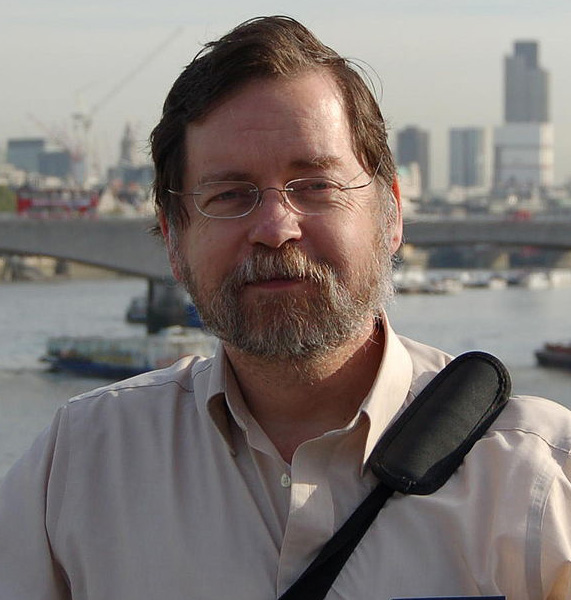 |
PZ Myers, 2015 Developmental biologist, atheist, and well known ID critic There is an upper bound to the number of genes we can possibly carry, and it happens to be in the neighborhood of the number of genes estimated in the human genome project [...] this is why some of us go all spluttery and cross-eyed at any mention of the ENCODE project. They just blithely postulated orders of magnitude more functioning elements in the genome than could be tolerated by any calculation of the genetic load.20The human genome project found about 30,000 genes,38 which would comprise perhaps 3% of human DNA. Myers says that If much more than this is functional, evolution becomes primarily a destructive process. |
 |
John Sanford, 2015 Population geneticist. Invented the gene gun leading to most of the world's GMO crops. Christian and young earth creationist. Most people in the field [of theoretical genetics] think the human genome is clearly degenerating, but they dismiss this as merely arising due to relaxed selection. But those who have examined it most closely realize that even with intense selection there is still a profound problem.39 |
3. Selfish genes
Some sequences of DNA, called transposons or mobile-elements, have the ability to make copies of themselves within DNA. Transposons range in size from a few hundred to tens of thousands of letters of DNA.40 The selfish gene theory proposed that among such sequences, those best at copying themselves will produce more copies of themselves than those that copy less frequently. Most complex organisms have hundreds of millions to billions of letters of DNA. Since having slightly more DNA has a negligible effect on one's ability to survive and reproduce, natural selection does not differentiate between organisms where transposons have produced several more copies. Since "only very precise deletion can be non-lethal,"7 these copying sequences spread much faster than they are removed. Because of this process, proponents of evolutionary theory proposed that the bulk of large genomes are made up of such selfish genes:
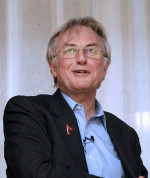 |
Richard Dawkins, 1976The simplest way to explain the surplus DNA is to suppose that it is a parasite, or at best a harmless but useless passenger.21 |
|---|---|
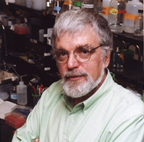 |
Ford Doolittle, 1980 Biochemist and member of the National Academy of Sciences. It is inevitable that natural selection of the special sort we call non-phenotypic will favor the development within genomes of DNAs whose only "function" is survival within genomes.7 |
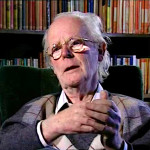 |
John Maynard Smith, 1981 Maynard Smith was a well known evolutionary biologist and geneticist. Science writer Roger Lewin reports on statements from John Maynard Smith at a recent conference: John Maynard Smith, a population geneticist from the University of Sussex, England, cut through what confusion remained with this clear statement: "If there are elements in the genome that can multiply, and if certain structures of these elements can influence their replication, then it follows logically that there will selfish DNA." |
 |
Christian de Duve, 1995 Nobel Laureate biologist who discovered the lysosome and peroxisome. To quote Dawkins: "The true 'purpose' of DNA is to survive, no more and no less. The simplest way to explain the surplus DNA is to suppose that it is a parasite or at best a harmless but useless passenger, hitching a ride in the survival machines created by the other DNA."13Here Duve is citing the words of Dawkins. |
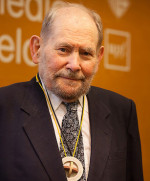 |
Sydney Brenner, 1998 Biologist, nobel laureate for his work on the genetic code. the molecular processes generating extra DNA outpace those getting rid of it.14 |
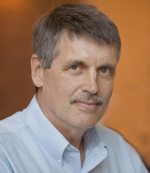 |
John Avise, 2010 Evolutionary geneticist, member of the National Academy of Sciences. [Mobile elements] have come to be present in such great abundance because they have found mechanistic ways to proliferate within host genomes.24 |
 |
Dan Graur, 2012 Evolutionary and molecular biologist the vast majority of transposons in the human genome are merely parasites, parasites of parasites, and dead parasites.25 |
4. Trial and Error
Evolution must "try" many useless sequences of DNA before it can find a few successful ones, and these failed remnants will remain genomes because (like selfish genes) selection to remove them is very weak.
 |
Susumu Ohno, 1972The creation of every new gene must have been accompanied by many other redundant copies [...] Triumphs as well as failures of nature's past experiments appear to be contained in our genome.5 |
|---|---|
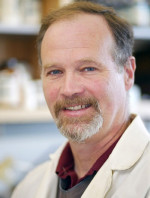 |
Ken Miller, 1994 Cell and molecular biologist, activist against intelligent design. In fact, the genome resembles nothing so much as a hodgepodge of borrowed, copied, mutated, and discarded sequences and commands that has been cobbled together by millions of years of trial and error against the relentless test of survival.11 |
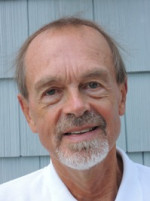 |
Philip Kitcher, 2007The most striking feature of the genomic analyses we now have is how much apparently nonfunctional DNA there is. Birds have it, bees have it, we have it, but some simpler organisms, bacteria, for example, have far less of it. The genomes of multicellular organisms are full of what look like the residues of sequences that were once functional genes, often in many copies, but that have now become degraded and lay no role in generating proteins... |
 |
Dan Graur, 2012 Evolutionary and molecular biologist The tinkerer [of evolution] […] manages with odds and ends. What he ultimately produces is generally related to no special project, and it results from a series of contingent events, of all the opportunities he had to enrich his stock with leftovers."25 |
Large amounts of junk DNA were also argued for two reasons that do not directly relate to evolutionary theroy:
5. The C-value paradox
A C-value is the quantity of all DNA in an organism's genome Some organisms have genomes much larger or smaller than other organisms of similar complexity, so it was assumed the extra DNA in large genomes wasn't necessary:
 |
David E. Comings, 1972Some organisms have an unreasonable excess of DNA, clearly more than they require.4 |
|---|---|
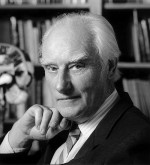 |
Francis Crick, 1980It seems totally implausible that the number of radically different genes needed in a salamander is 20 times that in a man.8 |
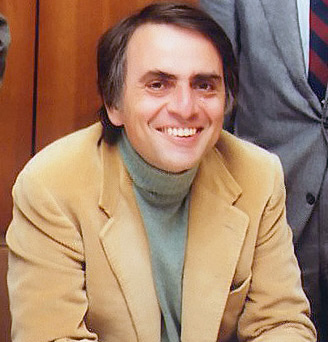 |
Carl Sagan, 1993The DNA instructions for making a human being comprise some 4 billion nucleotide pairs, while those for a one-celled amoeba contain 300 billion nucleotide pairs. There is little evidence that amoebae are almost a hundred times more "advanced" than humans"10 |
 |
Craig Venter, 1994 Venter led a team creating one of the first draft sequences of the human genome. He was interviewed by science journalist Natalie Angier: Dr. Venter pointed out that there is a good excuse for those who have long shrugged off junk as so much garbage. After all, some organisms function just fine without it. The smallpox virus, the E. coli bacterium and other microorganisms have only genes packed shoulder to shoulder, with no junk or introns in between. Even a couple of higher creatures, like the puffer fish, have very little noncoding DNA.12 |
 |
Christian de Duve, 1995Less than 5 percent of the human DNA has a coding function. Salamanders do much better--or worse, depending on one’s point of view. Some of these animals have twenty times more DNA than we have, with those in the west of the United States beating those in the east by severalfold.13Duve seems to be echoing the words of Dawkins. |
 |
Dan Graur, 2012 Evolutionary and molecular biologist Why does an onion need a genome that is about five times larger than ours?"25 |
 |
T. Ryan Gregory, 2014 Evolutionary and genome biologist A human genome contains eight times more DNA than that of a pufferfish but is 40 times smaller than that of a lungfish.28 |
6. "It seems unused"
Only around 1.5 to 2.9% of the DNA in mammals directly specifies which amino acids to assemble into proteins It was assumed that most of the remaining DNA wasn't copied into RNA, and in places where RNA was produced it often didn't do anything. Some argued (and still argue) that repetitive sequences and transposons fall into this category:
 |
Francis Crick, 1980The majority of DNA sequences in most higher organisms do not code for protein since they do not occur at all in messenger RNA. Nor is it very plausible that all this extra DNA is needed for gene control, although some portion of it surely must be.8 |
|---|---|
 |
Christian de Duve, 1995The eukaryotic genome is amde mostly of noncoding DNA without obvious function, sometimes called "junk" or "ballast" DNA. Less than 5 percent of the human DNA has a coding function...Here Duve is citing the words of Dawkins. |
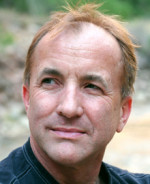 |
Michael Shermer, 2006 Historian of evolutionary theory, chief editor of Skeptic Magazine. Rather than being intelligently designed, the human genome looks more and more like a mosaic of mutations, fragment copies, borrowed sequences, and discarded strings of DNA that were jerry-built over millions of years of evolution.17 |
 |
PZ Myers, 2008 Developmental biologist, well known ID critic Go for the gusto andask them what their god was thinking when he loaded up your genome with the molecular equivalent of styrofoam packing peanuts19 |
 |
T. Ryan Gregory, 2014 Evolution and genome biologist The majority of human DNA consists of repetitive, mutationally degraded sequences.28 |
Skeletal DNA
However not all proponents of evolutionary theory argued that genomes were mostly junk. A minority argued that large amounts of DNA were useful as "skeletal DNA"--to increase the size of the cell nucleus as well as spacing between functional regions. Although being used as spacer is not how most biologists define DNA function.
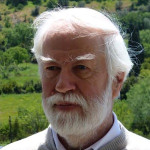 |
Thomas Cavalier-Smith, 1980It seems more reasonable to suppose that large cells actually require more DNA than do small ones... larger cells require more rRNA transport to the cytoplasm per cell cycle than do smaller cells [...] This could be done by increasing the amount of skeletal DNA so as to increase the nuclear surface area and the number of nuclear pores [...] much of it may be selfish in the restricted sense of having no sequence-specific function.41 |
|---|---|
 |
Gabriel Dover, 1980it is known from several species groups that chromosome arms increase proportionally in length as species accumulate more DNA, e.g. in salamanders. This might be a reflection of some process [...] that requires that certain regions of the genome should be kept as separable unique entities [...] we should not abandon all hope of arriving at an understanding of the manner in which some sequences might affect the biology of organisms in completely novel and somewhat unconventional ways.42 |
 |
John Maynard Smith, 1981 Maynard Smith was a well known evolutionary biologist and geneticist. Science writer Roger Lewin reports on statements from John Maynard Smith at a recent conference: Maynard Smith said that the selfish or ignorant origin of DNA does not necessarily imply that it has no effect on its host. Some sequences might became involved in signaling, and all of them, simply by increasing the amount of DNA in the nucleus, might influence the size and cycle time of the host cells.9 |
Any Predictions of Function?
Many biologists outside mathematical population genetics didn't like the idea that most DNA was junk. For example, Thomas Jukes wrote to Francis Crick in 1979:
I am sure that you realize how frightfully angry a lot of people will be if you say that much of the DNA is junk. The geneticists will be angry because they think that DNA is sacred. The Darwinian evolutionists will be outraged because they believe every change in DNA that is accepted in evolution is necessarily an adaptive change. To suggest anything else is an insult to the sacred memory of Darwin.43
In 1981, Roger Lewin reported on the "Genome Evolution and Phenotypic Variation" conference in Cambridge, England. He highlighted some interesting reports, such as Michael Bennet proposing that the 3D positions of chromosomes would place important functional genes on different chromosomes together.9 And Roy Britten and Eric Davidson proposing that some DNA between genes had regulatory function.9 But Lewin's summary doesn't note anyone proposing more than small percentages of function. He notes:
The longer biologists searched in vain for functions for these three classes of noncoding DNA, the stronger grew the conviction that much of the DNA might well be "junk" that for some reason could be tolerated in the nuclei of higher organisms.9
In contrast, in 1994 the Nobel prize winning molecular biology pioneer and physicist Walter Gilbert said:
I don't believe in junk DNA. I've long believed that the attitude that all information is contained in coding regions is very shortsighted, reflecting a protein chemist's bias of looking at DNA.12
So it seems that while junk DNA was an unpopular idea, few notable proponents of evolutionary theory argued that anything more than a small percentage of DNA had specific sequence, and none seem to have published journal papers arguing that DNA was at best anything more than skeletal filler or fuel12 for evolution. If it can be shown otherwise this article will be amended.
ID proponents predicted very little junk DNA
In recent years much more function has been discovered in human DNA. Genomicist and ENCODE researcher John Stamatoyannopoulos wrote in 2012, "I don’t think anyone would have anticipated even close to the amount of sequence that ENCODE has uncovered that looks like it has functional importance."[^stamatoyannopoulos-2012 Yet proponents of intelligent design predicted that genomes would contain very little junk DNA long before then:
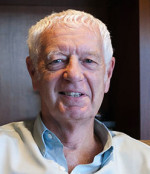 |
Michael Denton, 1986 Biochemist and early modern intelligent design proponent As it is, even without any sort of recombinational expansion, there is sufficient DNA in higher organisms to specify for more than one million genes. With so much DNA it is obvious that, by exploiting recombinational possibilities, the total number of genes could be expanded to a figure far in excess of one million.44We now know there's certainly not one million protein-coding genes, but Denton's use of "gene" refers to a functional region of DNA in general, just as Ford Doolittle used the term in his 1980 paper.7 Denton predicted again in 2002: if it were true that the genomes of higher organisms contained vast quantities of junk, then the whole argument of this book would collapse. Teleology would be entirely discredited. On any teleological model of evolution, most, perhaps all, the DNA in a genome of higher organisms should have some function [... While there is no doubt that at present no specific function can be attributed to most of the DNA in higher organisms, the idea that it is really junk is now under increasing attack.45 |
|---|---|
 |
Carl Wieland, 1994 Wieland is a medical doctor who founded Creation Magazine. While a Creation/Fall model could account for the accumulation of some random, mutationally defective "extra copies," evolutionists felt they had a strong point that 97% "junk" DNA pointed more to evolution than intelligent design. Creationists have long suspected that this "junk DNA" will turn out to have a function. In fact, junk DNA research is now a hot topic; not only are more and more functions being detected, but it is suspected that junk DNA is full of yet-to-be-discovered "intellectual riches."46 |
 |
Forest M Mims III, 1994 A prolific amateur scientist47 A do-nothing string of NOPs [no operations] might appear as "junk code" to the uninitiated, but, when inserted in a program loop, a string of NOPs can be used to achieve a precise time delay. Perhaps the "junk DNA" puzzle would be solved more rapidly if a few more computer scientists would make the switch to molecular biology.48 |
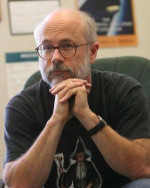 |
Michael Behe, 1996 Behe is a biochemist and leading intelligent design proponent. He wrote in response to Ken Miller's argument for junk DNA: because we have not yet discovered a use for a structure does not mean that no use exists49 |
 |
Don Batten, 1998 Agronomist and Horticultural scientist who works for Creation Ministries International. Little by little, the so-called "junk" DNA is revealing its functions... It would be foolish indeed to pronounce anything as "junk." Like the "vestigial organs" idea, it seems that evolutionary ideas about the molecular machines in cells feed on lack of knowledge.50 |
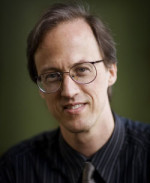 |
William Dembski, 1998 Mathematician and philosopher, among the earliest modern intelligent design proponents On an evolutionary view we expect a lot of useless DNA. If, on the other hand, organisms are designed, we expect DNA, as much as possible, to exhibit function.51 |
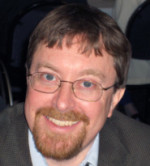 |
David Snoke, 2001 Physicist A theory of design can in principle be predictive and quantitative [...] The good-design assumption leads to specific predictions and applications, e.g., the prediction that it is unlikely to find wires which take up metal and space but serve no purpose, with the application that studying any particular wire is likely to be useful. A bad-design assumption (e.g. that the chip maker made many random circuits and then just picked out the ones that worked) would give very different predictions.52 |
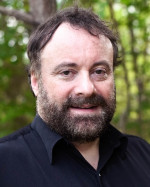 |
Jonathan Sarfati, 2003 Chemist who works for Creation Ministries International, author of numerous creation books "Junk DNA" (or, rather, DNA that doesn’t directly code for proteins) is not evidence for evolution. Rather, its alleged junkiness is a deduction from the false assumption of evolution. Just because no function is known, it doesn’t mean there is no function.53 |
ID critics affirm that intelligent design predicts function
Some ID critics agree that intelligent design does indeed predicts that most DNA will be functional, and that such a prediction is the opposite of what's expected under evolutionary theory.
 |
Ken Miller, 1994The human genome is littered with pseudogenes, gene fragments, "orphaned" genes, "junk" DNA, and so many repeated copies of pointless DNA sequences that it cannot be attributed to anything that resembles intelligent design. If the DNA of a human being or any other organism resembled a carefully constructed computer program, with neatly arranged and logically structured modules each written to fulfill a specific function, the evidence of intelligent design would be overwhelming.11 |
|---|---|
 |
Michael Shermer, 2006We have to wonder why the Intelligent Designer added to our genome junk DNA, repeated copies of useless DNA, orphan genes, gene fragments, tandem repeats, and pseudogenes, none of which are involved directly in the making of a human being.17 |
 |
Philip Kitcher, 2007What rival explanation can creationist provide? They can't say these are strikingly good designs. For much of what we find is a disorderly botch, some if it dangerous and needing newly contrived methods of control. As the evidence accumulates, creationists increasingly must take refuge in responses Darwin saw as unsatisfactory evasions, appealing to the thought that these properties of life are unfathomable mysteries.18 |
 |
PZ Myers, 2008Much of our makeup is entirely by accident, and evolution is a story of filtered accidents. Creationists don’t like that — one of their central assumptions is that everything is purposeful — but don’t pander to their beliefs. Go for the gusto and ask them what their god was thinking when he loaded up your genome with the molecular equivalent of styrofoam packing peanuts19 |
 |
Dan Graur, 2013Turning the genome into a well oiled efficient machine in which every last nucleotide has a function is the dream of every creationist and IDiot (derogatory term for intelligent design proponent), so the frequent killing of junk DNA serves no good purpose.54 Graur appears to quote Dembski above: If on the other hand organisms are designed, then all DNA, or as much as possible, is expected to exhibit function.26 |
How much functional DNA does ID predict?
The Abundant Functional DNA as Design Evidence article defines "strictly" and "loosely" functional DNA. Under many ID models (especially those that reject common descent) it makes sense for most DNA to be at least loosely functional, and the amount of strictly functional DNA would likely be not far behind. If evolution primarily degrades function, the percentage of functional DNA depends on how fast and how long it has been degrading.
The Age of Humans
This table shows the time estimated by various creation and ID groups since humans were created.
| Age of Humans | Groups |
|---|---|
| 6,000 (years) | Answers in Genesis, Creation Ministries International, Institute for Creation Research, and most other young earth creation groups. |
| 50,000 to 150,00055 | Reasons to Believe, an old earth creation group |
| 2,000,000 | Casey Luskin and David Klinghoffer writing for the Discovery Institute56 (although views within the Discovery Institute vary). |
A Simple Model
To calculate how much strictly functional human DNA has not already been destroyed, suppose the following:
25 years per human generation. 3 million functional units of 1000 nucleotides each, making a 3 billion DNA-letter genome. Humans have two copies of each gene, so alternatively that would make 6 billion if we count both copies of each gene. 50 haploid (affecting one only set of genes) mutations per generation. The total mutation rate is 100 mutations per generation,37 so we divide that by two. 45 haploid mutations that persist from one generationto the next, assuming 5 are removed by natural selection.57 A 10% chance a mutation within a gene will destroy that gene. Many mutations are neutral--having no effect on function, and others only slightly degrade the function of a gene. Most mutations are either neutral or only slightly deleterious,29 30 causing genes to slowly degrade across the entire population. Then when a gene becomes entirely non-functional, selection is largely blind to the difference between it and a hightly degraded version of the same gene.
Multiplying the 45 haploid mutations times the 10% chance a mutaiton will destroy a gene gives 4.5 genes being destroyed each generation. From there we can extrapolate:
| Age of Humans | Generations | Genes destroyed | Functional haploid genome | Functional diploid genome |
|---|---|---|---|---|
| 6,000 (years) | 240 | 1,080 | 99.96% | 99.999984% |
| 10,000 | 400 | 1,800 | 99.94% | 99.999964% |
| 100,000 | 4,000 | 18,000 | 99.4% | 99.9964% |
| 1,000,000 | 40,000 | 180,000 | 94% | 99.64% |
| 6,000,000 | 240,000 | 1,080,000 | 66.67% | 88.89% |
Caveats with These Models
The results become more skewed further into the past, since when only 66% of the genome is functional, the deleterious mutation rate is reducted to 50 times 66%. Genes work together in complex, interacting networks. Knocking out one pair of genes could make the entire network non-functional. Conversely, unrelated genes may kick in to perform the same task as other genes that have failed. This model accounts for neither phenomenon.
Other Models
Botanist Alex Williams makes a more pessimistic estimate in a 2008 Journal of Creation article. Based on estimated rates of gene loss and the percentage of critical genes, Williams calculates between 1200 and 1.5 million until humans accumulate too many mutations to survive.58 However, a less-involved form of design could give very different predictions. Perhaps a designer only seeded the first cells on earth, or that chemistry itself was designed to greatly increase the odds of life forming from non-living matter. And then unguided evolution proceeded from there to create most of the life forms we see today. If a designer only played such a modest role, then the bulk of larger genomes could be junk.
Perspectives change
As new research revealed higher-than-expected levels of function, some former junk DNA proponents changed their minds:
 |
Francis Collins, 2010 Francis Collins was the former head of the human genome project and currently heads the National Institutes of Health. He wrote: The discoveries of the past decade, little known to most of the public, have completely overturned much of what used to be taught in high school biology. If you thought the DNA molecule comprised thousands of genes but far more 'junk DNA', think again.59 Also in 2015: I would say, in terms of junk DNA, we don't use that term any more 'cause I think it was pretty much a case of hubris to imagine that we could dispense with any part of the genome as if we knew enough to say it wasn't functional. There will be parts of the genome that are just, you know, random collections of repeats, like Alu's, but most of the genome that we used to think was there for spacer turns out to be doing stuff and most of that stuff is about regulation and that's where the epigenomegets involved, and is teaching us a lot.60 |
|---|---|
 |
Richard Dawkins, 2012I have noticed that there are some creationists who are jumping on [the 2012 ENCODE results] because they think that's awkward for Darwinism. Quite the contrary it's exactly what a Darwinist would hope for, is to find usefulness in the living world [...] we thought only a minority of the genome was doing something, mainly that minority which only codes for protein, and now we find that actually the majority of it is doing something. What it's doing is calling into action the protein coding genes. [...] The program that's calling them into action is the rest that had previously been written off as junk.61 |
 |
Thomas Gingeras, 2012 A lead ENCODE researcher (paraphrased in the New York Times) The thought before the start of the [ENCODE] project, was that only 5 to 10 percent of the DNA in a human being was actually being used. The big surprise was not only that almost all of the DNA is used but also that a large proportion of it is gene switches.62 |
Other functional genome researchers expect even more functions to be found in the future:
 |
Ewan Birney, 2012 Birney led the analysis group for the ENCODE project. It’s likely that 80 percent [estimate of functional human DNA] will go to 100 percent. We don’t really have any large chunks of redundant DNA. This metaphor of junk isn’t that useful.63 |
|---|---|
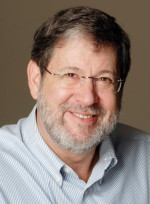 |
John Mattick, 2013 John Mattick is a non-coding DNA researcher who is the CEO of Genomics England, which runs the 100,000 genomes project. Where tested, these [differentially expressed] noncoding RNAs usually show evidence of biological function in different developmental and disease contexts, with, by our estimate, hundreds of validated cases already published and many more en route, which is a big enough subset to draw broader conclusions about the likely functionality of the rest.64In 2018, Mattick noted that more biologists were coming around to the idea that most DNA is not junk: While not everyone yet agrees with me, the evidence is very strong and my thesis is more widely accepted than it once was.65 |
The junk DNA mindset impeded scientific progress
Because evolutionary theory predicted that the majority of large genomes would be non-functional, researchers rarely studied DNA beyond that which directly created proteins Many now recognize how this harmed scientific progress, such as in understanding the genetic causes of disease:
 |
John Mattick, 2003The failure to recognise the implications of the non-coding DNA will go down as the biggest mistake in the history of molecular biology.66 Mattick recognizes himself as: The first to recognise that the human genome is not largely junk, but rather (that the 98.5% that does not code for proteins) specifies a massive hidden layer of regulatory RNAs that organise our development and provides the platform for brain function.65 |
|---|---|
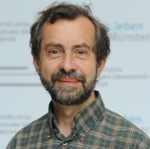 |
Wojciech Makalowski, 2007 Molecular biologist The term "junk DNA" repelled mainstream researchers from studying noncoding genetic material for many years.67 |
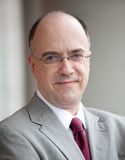 |
Mark Mehler, 2008 Clinical neurologist "The math just doesn't add up...There's just not enough molecular diversity" in proteins to create the complexity of the brain. "For a while, I despaired of ever being able to even think about this in my lifetime in a rational way," Mehler says. Then he heard about noncoding RNA.68 |
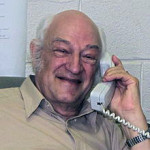 |
Edward Trifonov, 2010 Molecular biophysicist known for discovering additional codes in DNA. From a presentation: I consider that these publications [the 1980 papers advocating junk DNA by Doolittle, Sapienza, Crick, and Orgel] are bordering with crime [borderline-criminal] because they completely misled scientific community so that all the messages carrying by the noncodingsequences have been ignored since then--30 years.69 Trifonov's accompanying slide stated: These two papers inflicted an immense damage to biological sciences.69 |
 |
Lawrence Hurst, 2013 Evolutionary geneticist Intergenic DNA was dismissed as irrelevant junk and many transcripts are presumed to be just so much noise... Early gene therapytrials were, for example, halted owing to unforeseen knock-on consequences of gene insertion.70 |
Although others (including many of the junk DNA proponents quoted above) still maintain that the large majoirty of human DNA is non-functional.

This companion article presents data indicating humans have large amounts of functional DNA and that evolution cannot account for it.
Sources
-
Sternberg, Richard. "How The Junk DNA Hypothesis Has Changed Since 1980." Evolution News 2009. Mirrors: Archive.org, Archive.is. ↩
-
Kimura, Motoo. "Evolutionary Rate at the Molecular Level." Nature. 1968. Mirrors: Saitou Naruya Laboratory, Archive.org, Archive.is. ↩ ↩
-
King, Jack Lester and Thomas Jukes. "Non-Darwinian Evolution." Science. 1969. Page 794, top of third column. Mirrors: Archive.org, Archive.is, Local screenshot. ↩ ↩
-
Comings, David E. "Advances in Human Genetics Volume 3, Chapter 5 The structure and function of chromatin." Springer. 1972. Mirrors: Local screenshot. ↩ ↩ ↩
-
Ohno, Susumu. "So much 'Junk' in our Genome." Brookhaven Symposia in Biology. 1972. Mirrors: Archive.org, Archive.is, Local excerpt with comment. ↩ ↩ ↩
-
O'Brien, Stephen J. "On estimating functional gene number in eukaryotes." ↩ ↩
-
Doolittle, Ford and Carmen Sapienza. "Selfish genes, the phenotype paradigm and genome evolution." Nature. 1980. Mirrors: Archive.org, Local excerpt with comment. ↩ ↩ ↩ ↩ ↩ ↩
-
Crick, Francis and Leslie Orgel. "Selfish DNA: The Ultimate Parasite." Nature. 1980. Mirrors: Archive.org, Local excerpt with comment. ↩ ↩ ↩
-
Lewin, Roger. "Do Jumping Genes Make Evolutionary Leaps?" Science. 1981. ↩ ↩
-
Sagan, Carl and Ann Druyan. "Shadows of Forgotten Ancestors." Random House. 1993. Page 128. Mirrors: Google Books, Local screenshot. ↩ ↩
-
Miller, Kenneth. "Life's Grand Design." Technology Review 1994. Mirrors: Archive.org ↩ ↩ ↩
-
Angier, Natalie. "Keys Emerge To Mystery Of 'Junk' DNA." The New York Times. 1994. Mirrors: Archive.is. ↩ ↩ ↩
-
"'I'm of the school of thought that junk DNA is absolutely necessary in evolution and recombination,' said Dr. J. Craig Venter of the Institute for Genomic Research in Gaithersburg, Md." ↩
-
-
de Duve, Christian. "Vital Dust: Life as a Cosmic Imperative." 1995. Pages 222-223. Mirrors: Local screenshot. ↩ ↩ ↩ ↩
-
Brenner, Sydney. "Refuge of Spandrels." Current Biology 1998. Mirrors: Archive.is. Sydney Brenner is a biologist and winner of the 2002 Nobel prize in Physiology and Medicine. He was also the first to propose the concept of messenger RNA while working with Francis Crick in the 1950s, as well as codons. ↩ ↩
-
Felsenstein, Joseph. "Theoretical Evolutionary Genetics." 2003. Page 121. Mirrors: Archive.org ↩ ↩
-
Collins, Francis. "The Language of God." Free Press. 2006. Page 135. Mirrors: Local screenshot. Francis Collins is a geneticist, former director of the human genome project and in 2009 was appointed by president Obama as director of the NIH. ↩
-
Shermer, Michael. "Why Darwin Matters: The Case Against Intelligent Design." Times Books. 2006. Page 74. Mirrors: Google Books, Local screenshot. ↩ ↩ ↩
-
Kitcher, Philip. "Living With Darwin: Evolution, Design, and the Future of Faith." Oxford University Press. 2007. Pages 57-58. Mirrors: Local screenshot. ↩ ↩ ↩
-
Myers, PZ. "15 misconceptions about evolution." Pharyngula Blog. 2008. Mirrors: Archive.org, Archive.is. PZ Myers is an evolutionary and developmental biologist In 2006, Nature listed his blog Pharyngula as the top ranked blog by a scientist. ↩ ↩ ↩
-
Myers, PZ. "The Genetic Load Problem." Science Blogs. 2015. ↩ ↩
-
Dawkins, Richard "The Selfish Gene." Oxford University Press. 1976. Page 45. Mirrors: Local screenshot. ↩ ↩
-
Dawkins, Richard. "The Information Challenge." Australian Skeptics. 1998. Mirrors: Archive.org, Archive.is. ↩
-
Dawkins, Richard "The Greatest Show on Earth: The Evidence for Evolution." Free Press. 2009. Pages 332-333. Mirrors: Google Books, Local screenshot. ↩
-
Avise, John. Inside the Human Genome: A Case for Non-Intelligent Design." Oxford University Press. 2010. Pages 82 and 132. Mirrors: Local screenshot. In his 2010 book, Avise gives an estimate for how much of the human genome is junk based on repetitive sequences appearing unuseful. ↩ ↩
-
Graur, Dan. "'Function' in the human genome according to the evolution-free gospel of ENCODE." Genome Biology and Evolution. 2013. Mirrors: Archive.org, Local excerpt with notes. ↩ ↩ ↩ ↩ ↩ ↩
-
Graur, Dan. "How to Assemble a Human Genome." 2013. Slide 5. Mirrors: Archive.org, Local screenshot, Local excerpt with notes. ↩ ↩ ↩ ↩
-
Prothero, Don. "Reality Check How Science Deniers Threaten Our Future." Indiana University Press." 2013. Page 118. Mirrors: Google Books, Local screenshot. Don Prothero is a mammalian paleontologist regarded by Stephen J. Gould as "the best punctuated equilibrium researcher on the West Coast. Searching Prothero's book for "ENCODE" produced no results, but sometimes Google book search can be spotty. ↩
-
Gregory, T. Ryan and Alexander Palazzo. "The Case for Junk DNA." PLOS Genetics. 2014. Mirrors: Archive.org, Local excerpts with notes. ↩ ↩ ↩ ↩ ↩
-
Eyre-Walker, Adam et al. "The distribution of fitness effects of new mutations." Nature. 2007. Mirrors: Archive.org, Archive.is. The authors state "relatively few amino-acid-changing mutations have effects of greater than 10% in humans, and that most have effects in the range of 10-3 and 10-1" Mutations in synonymous regions and non-protein coding genes would have even less of an effect. ↩ ↩
-
Lind, Peter A. et al. "Mutational Robustness of Ribosomal Protein Genes." Science. 2010. The authors tested ribosomal proteins in salmonella trphimurium and found: "most mutations (120 out of 126) are weakly deleterious and the remaining ones are potentially neutral." ↩ ↩
-
Lynch, Michael. "The Origins of Eukaryotic Gene Structure." Mol Bio Evol. 2006. Mirrors: Archive.is. Michael Lynch is a highly respected population geneticist. He writes, "The neutral (or nearly neutral) theory that emerged from this work still enjoys a central place in the field of molecular evolution" and "it is difficult to reject the hypothesis that the basic embellishments of the eukaryotic gene originated largely as a consequence of nonadaptive processes operating contrary to the expected direction of natural selection." ↩
-
Myers, PZ. "The state of modern evolutionary theory may not be what you think it is." Pharyngula Blog. 2014. Mirrors: Archive.is.PZ Myers is a developmental biologist well known for his criticisms of Intelligent Design Myers writes "the revolution is over. Neutral and nearly neutral theory won." ↩
-
Dodson, Edward O. "Note on the Cost of Natural Selection." The American Naturalist. 1962. Mirrors: Local screenshot. JBS Haldane was an evolutionary biologist well known for his work in developing the modern evolutionary synthesis. Calculating the implications of Haldane's model, Dodson explains: "Haldane (1957) has published calculations which indicate that it takes no less than 300 generations to replace a gene by ordinary selection pressures, and that this evolutionary process cannot be speeded up by simultaneous selection for more than one gene... we arrive at a maximum of something over 200 gene substitutions over the past million years for the genus Homo. Since on average the mutation rate is the fixation rate, 300 generations with about 100 mutations per generation would give 30,000 neutral mutations per 1 beneficial mutation that fixes 29,999 / 30,000 is 99.997% of fixed mutatiosn being netural. ↩
-
Moran, Larry. Comment on "Breaking news: Creationist Vincent Torley lies and moves goalposts." Sandwalk Blog. 2014. Joe Felsenstein is a well known population geneticist who has published a criticism of Haldane's limit. When he and biochemist Larry Moran (both Intelligent Design critics) were asked to estimate the number of beneficial versus netural differences between human and chimps, they replied, "Updated numbers suggest 44 million point mutations and something like 2 million insertions/deletions for a grand total of 46 million mutations. We don't know how many of those were beneficial (adaptive) leading to ways in which modern chimps are better adapted than the common ancestor. (Same for humans.) My guess would be only a few thousand in each lineage. 1 - 3000 / 23,000,000 is 99.987% of fixed mutations being neutral. ↩
-
Meader et al. "Massive turnover of functional sequence in human and other mammalian genomes." Genome Res. 2010. Mirrors: Archive.is. Figure 2 shows how much DNA (of 3 billion base pairs total) is shared between humans (homo), macaca monkeys, mice (mus), rats (rattus), horses (equus), cows (bos), and dogs (canis). ↩
-
Moran, Larry. "A creationist tries to understand genetic load." Sandwalk Blog. 2014. Mirrors: Archive.org, Archive.is. ↩
-
Moran, Larry. "Estimating the Human Mutation Rate: Direct Method." Sandwalk Blog. 2013. ↩ ↩
-
"The Human Genome Project Completion: Frequently Asked Questions." National Human Genome Research Institute. 2003. The project estimated "30,000 genes" in the human genome, which would comprise about 3% of human DNA. ↩
-
Sanford, John. Response to Gerald Jellison." Amazon. 2015. Unfortunately, Amazon removed all comments on reviews, so this comment is no longer available. But it was copied from Sanford's comment there when writing this article. ↩
-
Encyclopedia Britannica. "Transposon." 2014. Mirrors: Archive.is. ↩
-
Cavalier-Smith, Thomas. "How Selfish is DNA?." Nature 1980. Mirrors: Local screenshot. ↩
-
Dover, Gabriel. "Ignorant DNA?." Nature. 1980. Mirrors: Local screenshot ↩
-
Jukes, Thomas H. "Letter from Thomas H. Jukes to Francis Crick." 1979. ↩
-
Denton, Michael. "Evolution: A Theory in Crisis." Burnett Books. 1996. Pages 331-332. Mirrors: Local screenshot. ↩
-
Denton, Michael. "Nature's Destiny." Free Press. 2002. Page 290. Mirrors: Google Books, Local screenshot. ↩
-
Wieland, Carl. "Junk Moves Up in the World." Creation ex nihilo Technical Journal. 1994. Mirrors: Archive.org, Archive.is. ↩
-
Schlesinger, Victoria. "The Amateur Scientists Who Might Cure Cancer—From Their Basements." Discover Magazine. 2008. Mirrors: Archive.is. ↩
-
Mims, Forest M. III. "Letter to the editor of Science." 1994. Mirrors: Archive.org, Archive.is. Mims does not have formal training in science, but has published several papers in ecology and environmental science, including in Nature In 2008, Discover Magazine featured him in a list of 10 Amature Scientists Who Might Cure Cancer. ↩
-
Behe, Michael. "Darwin's Black Box." Free Press. 1996. Page 226. Mirrors: Google Books, Local screenshot ↩
-
Batten, Don. "'Junk' DNA (again)." Creation Ministries International. 1998. Mirrors: Archive.org. ↩
-
Dembski, William. "Science and Design." First Things. 1998. Mirrors: Archive.org, Archive.is. ↩
-
Snoke, David. "In favor of God-of-the-gaps reasoning." Perspectives on Science and Christian Faith. 2001. Mirrors: Archive.org, Archive.is. ↩
-
Sarfati, Jonathan. "DNA: marvellous messages or mostly mess?" Creation Magazine. 2003. ↩
-
Graur, Dan. "Dear Card Carrying #ENCODE members: Please Remember That Junk DNA is Not a Synonym for Noncoding DNA." Judge Starling Blog. 2013. Mirrors: Archive.org, Archive.is. ↩
-
"Age of Adam." Reasons to Believe. Retrieved Jan 1, 2017. Mirrors: Archive.org, Archive.is. ↩
-
Klinghoffer, David. "In Science and Human Origins, Casey Luskin Reveals the 'Big Bang' of Human Evolution.." Evolution News. 2012. ↩
-
Gibson et al. "Can Purifying Natural Selection Preserve Biological Information?." World Scientific. 2011. The authors simulate "With a mutation rate of 10, almost half of all deleterious mutations were retained." ↩
-
Williams, Alex. "Mutations: evolution’s engine becomes evolution’s end!." Journal of Creation. 2008. Mirrors: Archive.org, Archive.is. ↩
-
Collins, Francis. "The Language of Life. HaperCollins, 2010. Pages 5-6. Mirrors: Local screenshot. Collins goes into more detail on page 9: "The exons and introns of protein-coding genes add up together to about 30 percent of the genome. Of that 30 percent, 1.5 percent are coding exons and 28.5 percent are removable introns. What about the rest? It appears there are also long 'spacer' segments of DNA that lie between genes and that don't crowd for protein. In some instances, these regions extend across hundreds of thousands or even millions of base pairs, in which case they are referred to rather dismissively as 'gene deserts.' These regions are not just filler, however. They contain many of the signals that are needed to instruct a nearby gene about whether it should be on or off at a given developmental time in a given tissue. Furthermore, we are learning that there may be thousands of genes hanging out in these so-called deserts that don't code for protein at all. They are copied into RNA, but those RNA molecules are never translated--instead, they serve some other important function." ↩
-
Moran, Larry. "Francis Collins rejects junk DNA." Sandwalk Blog. 2015. Mirrors: Archive.org, Archive.is. ↩
-
Dawkins, Richard. "Jonathan Sacks and Richard Dawkins at BBC RE:Think festival 12." 2012. Mirrors: Local clip. ↩
-
Kolata, Gina. "Bits of Mystery DNA, Far From 'Junk,' Play Crucial Role.." New York Times. 2012. ↩
-
Yong, Ed. "ENCODE: the rough guide to the human genome." Discover Magazine. 2012. ↩
-
Mattick, John S. and Marcel E. Dinger. "The extent of functionality in the human genome." HUGO. 2013. Mirrors: Archive.is, Local excerpt with notes. ↩
-
Mattick, John. "Meet Professor John Mattick, CEO at Genomics England." 2018. Mirrors: Archive.org. ↩ ↩
-
"Genius of Junk (DNA)." 2003. Mirrors: Archive.org, Archive.is. ↩
-
Makalowski, Wojceich. "What is junk DNA, and what is it worth?." Scientific American. 2007. Mirrors: Archive.org, Archive.is. ↩
-
" Micromanagers: New classes of RNAs emerge as key players in the brain." Science News. 2008. Mirrors: The Free Library, Archive.is. ↩
-
Trifonov, Edward. "Second, third, fourth... genetic codes. One spectacular case of code crowding." 2010. Seek to 10:17. Mirrors: Local screenshot. ↩ ↩
-
Hurst, Lawrence D. "A logic (or lack thereof) of genome organization." BMC Biology. 2013. Mirrors: Archive.org, Archive.is. Hurst goes on to criticize ENCODE for offering too wide of a definition of function, as well as listing many open questions. ↩








